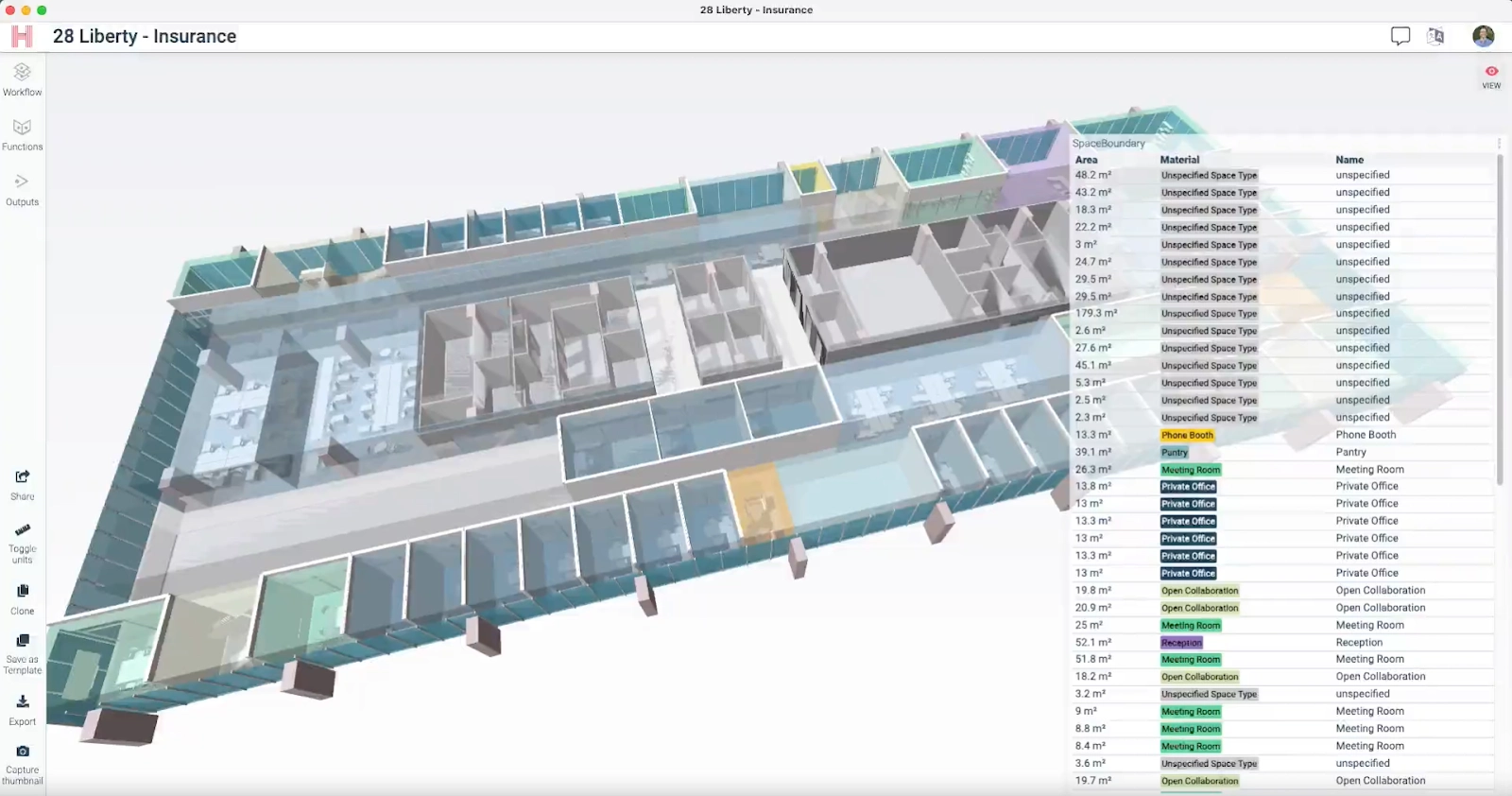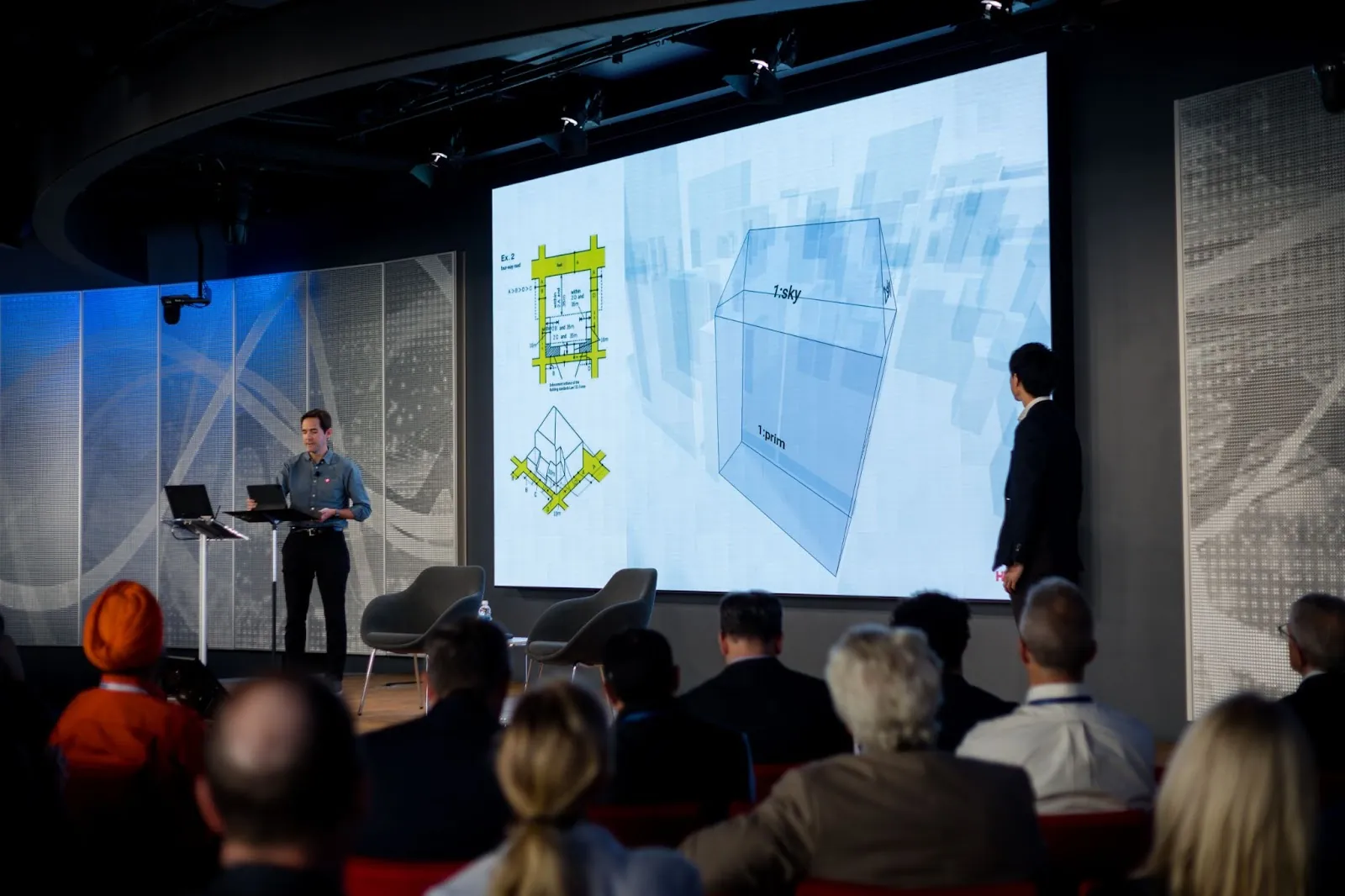Increasingly, buildings are becoming more like products, both in how they’re built (offsite and modular) and operated (as tech-enabled “smart” buildings). But the way we conceptualize, design, and construct them is hindered by the decades-old software still used to make drawings. Designers use BIM software to sequentially assemble building models from seemingly endlessly nested menus of building element “features.” Exploring alternate designs generally involves manually manipulating model elements, a time-consuming process that limits the options that can be considered.
Hypar knew there was a better solution and set out to develop the industry’s first open-source and cloud-native generative design platform. Co-founders Ian Keough and Anthony Hauck launched Hypar in 2019 with a founding investment from Building Ventures, and the following year Building Ventures led the company’s seed round to expand the team.

A project view in the Hypar platform.
Ian and Anthony’s earned secret uniquely positioned them to bring the industry’s next generation platform to life. Ian, known as the “father of Dynamo,” the visual generative design language he developed at Buro Happold and later sold to Autodesk. And Anthony, who served as Revit product manager at Autodesk during its formative years as the industry was transitioning from CAD to BIM. The pair of AEC veterans recruited an all-star engineering team with diverse backgrounds from Google, WeWork, and NBBJ. From the outset, Ian and Anthony also began to cultivate a global network of computational designers to the Hypar community.
Fast forward to today, and unlike the legacy BIM software described above, Hypar consists of an infinitely extensible library of rules-based building “systems.” The open-source algorithms that generate these systems can be configured, constrained, and combined with other building systems to automatically generate buildings with all their multidisciplinary, constituent parts (“objects”). This not only enables the industry to further embrace the productization of buildings, or constructuring as we call this at Building Ventures; but it also provides a better experience for designers, builders, and their clients.
A great example is the multi-story building generator created by Obayashi. This generator encapsulates this global builder’s structural steel, concrete, and facade expertise and merges it with local building codes. It is used to generate dozens of valid building designs for any specific address in Tokyo. And it does so in a fraction of the time it used to take to create just one proposal, allowing Obayashi’s clients to consider the aesthetic and utility of many more design options. And since Hypar is cloud-based, this can be done from any device with a modern browser.

Hypar CEO Ian Keough, left, presenting with Obayashi’s Takuma Nakabayashi, right, at our BVIN Fall Summit 20222.
But it’s the Hypar platform’s interoperability that shows off the true potential. Merge the Tokyo building generator with the built-in Hypar space planning system to automatically generate offices, meeting rooms, employee lounges, and more. Obayashi clients see the impact of design decisions on occupancy and utility in real time.
And once the design is generated within Hypar—or, really, at any point during the process—the platform’s two-way Revit integration extends the workflow for detailed design and construction drawings.
While the building generator created by Obayashi on Hypar is an excellent example of how the platform’s technology can be leveraged to improve the design process, it’s far from the only one. Other examples include a drywall system by DPR Construction, which pulls walls in from Revit, calculates joint types for estimation, and optimizes layout for waste reduction. And there’s the space planning system that Unispace built, which interacts with existing structural, mechanical and facade systems to achieve optimal space utilization for its datacenter, logistics facilities, health care, and retail clients.
Having demonstrated commercial readiness in the few short years since launching Hypar, Ian and Anthony are now poised for growth. The foundation for their mission, to help us move beyond drawing-based BIM towards generating buildings delivered as products, has been put in place and proven by dozens of industry-leading organizations. And there are hints about where Hypar might take us next with the marriage of generative design and conversational AI discussed in a recent AEC Magazine feature story.
For this reason, Building Ventures is thrilled to participate in Hypar’s recent $5.5 million Series A led by Brick and Mortar Ventures, with the ongoing support from Obayashi and Keough Ventures. We are proud to have supported Hypar since its inception, and we’re excited to partner with Brick and Mortar Ventures to support Hypar during this exciting new chapter. We can’t wait to see how it unfolds.
Learn more about Hypar here, and read more about their Series A financing here.


